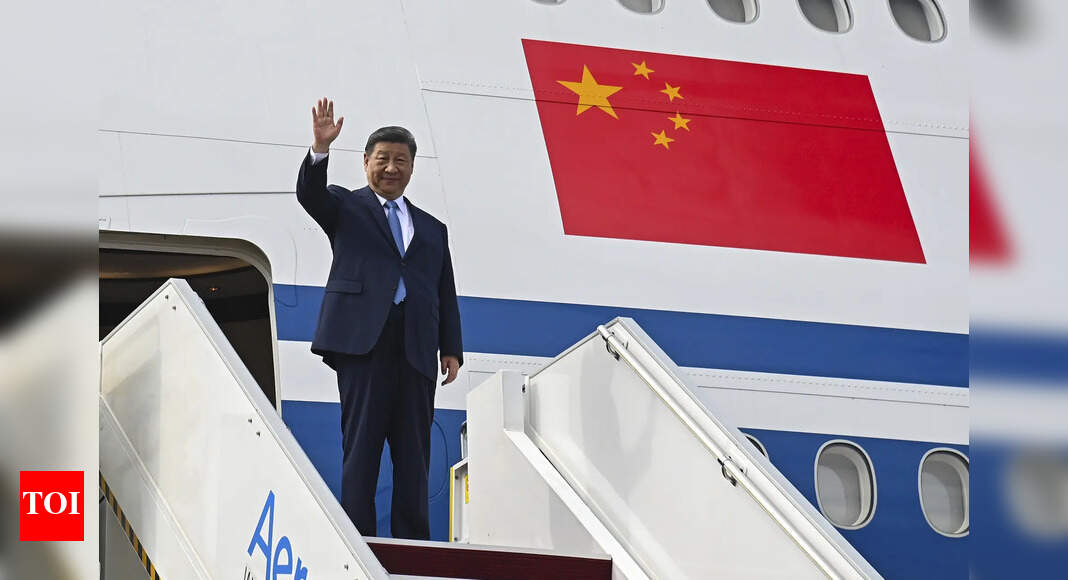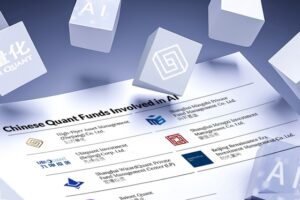Xi Jinping Issues Alert to China’s Tech Firms Amid Concerns Over DeepSeek as a Major Threat to U.S. National Security

Xi Jinping’s Vision for AI Innovation in China
Introduction to AI as a Key Focus
Chinese President Xi Jinping has highlighted artificial intelligence (AI) as a crucial element in the upcoming technological revolution. He has called upon the nation to gain a competitive advantage in this rapidly evolving field. In a recent high-level meeting of the Communist Party, Xi emphasized AI’s potential to transform production processes and lifestyles, making it a priority for China’s global aspirations.
Strategic Importance of AI for China
During the meeting, Xi articulated the need for China to harness its unique capacity for resource mobilization to enhance AI innovation. He stressed the importance of self-reliance and application-driven development in this sector. Xi proposed a balanced approach to AI growth, one that is beneficial, secure, and equitable. Recognizing existing gaps in foundational theories and core technologies, he urged for expedited scientific research, industrial applications, and the establishment of regulatory frameworks. His long-term vision aims to ensure China retains control over both AI development and governance while striving to match global leaders like the United States in this domain.
Significant Investments in AI and Related Technologies
China has invested heavily in AI as part of its broader initiative to lead emerging technologies. Over recent years, the country has significantly increased funding in various high-tech sectors, including AI, quantum computing, and electric vehicles (EVs). Notably, China’s military is also integrating AI for logistics and surveillance purposes, which raises concerns among western nations regarding potential military applications. According to a 2024 report from the Center for Strategic and International Studies, China’s investment in AI reached around $25 billion in 2023, making it the second-largest investor globally, following the U.S.
DeepSeek: A Case Study in AI Advancement
A notable example of China’s AI capabilities is DeepSeek, an affordable AI model developed by the Chinese tech company High-Flyer. Launched in early 2025, DeepSeek has drawn significant attention for its balance of cost-effectiveness and performance, positioning it as a competitor to Western models, such as those designed by OpenAI. However, it has also stirred controversy. Recently, the U.S. House Select Committee on Strategic Competition labeled DeepSeek a “profound threat” to national security, referencing links to the Communist Party and concerns regarding data privacy.
International Response to Chinese AI Developments
The backlash related to DeepSeek has extended beyond the U.S. Nations like India, Japan, and Australia have enacted restrictions on using this AI tool among government officials due to fears of data breaches and potential espionage. In particular, India has raised alarms about DeepSeek’s data collection methods, which might contravene its 2024 Digital Personal Data Protection Act. The measures taken have sparked accusations from Beijing, claiming that Western nations are politically motivating trade and technology policies. Chinese Foreign Ministry spokesperson Lin Jian has criticized these bans, arguing they hinder innovation and misalign global cooperation.
Impact of the U.S.-China Tech Rivalry
Xi’s call for AI leadership comes against the backdrop of escalating tech rivalry between the U.S. and China, often referred to as a new Cold War. The U.S. government has implemented stringent export controls on advanced semiconductors and AI technologies to limit China’s access to critical components. In response, China is doubling down on promoting domestic innovation, with companies like Huawei and Baidu making advances in AI chip development despite facing sanctions.
Challenges Facing Chinese AI Initiatives
While China aims to become a leading force in AI, experts point to several challenges. There is a noticeable shortage of top-tier talent in the AI field, coupled with an over-reliance on government-backed investment, which may pose challenges to sustainable growth. From a global perspective, China’s advancements in AI present both opportunities and concerns. Countries in Africa and Southeast Asia appreciate the cost-effective AI solutions provided by Chinese technology, especially in sectors such as healthcare, agriculture, and education. However, fears regarding data sovereignty and dependency on Chinese technology have led to calls for stricter regulations.
The Drive for Technological Self-Sufficiency
Xi Jinping’s vision for AI aligns with China’s larger objective of achieving technological self-sufficiency by 2035, as detailed in its 14th Five-Year Plan. Initiatives like “Made in China 2025” are part of a strategy to position AI as a key driver for both economic growth and geopolitical influence. However, this pursuit is not without its risks, which include heightened trade disputes and ethical concerns surrounding the use of AI in surveillance and autonomous systems.





